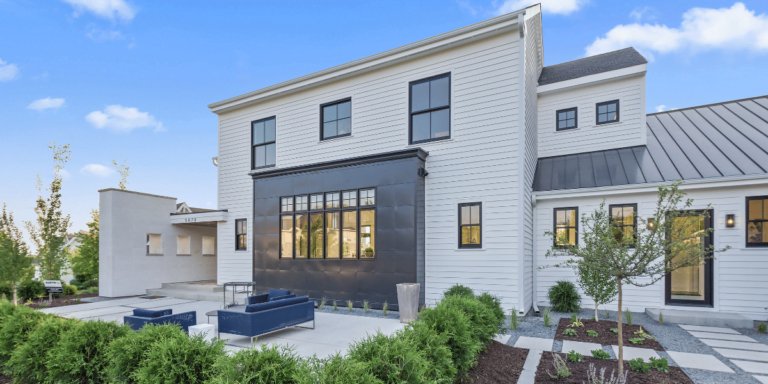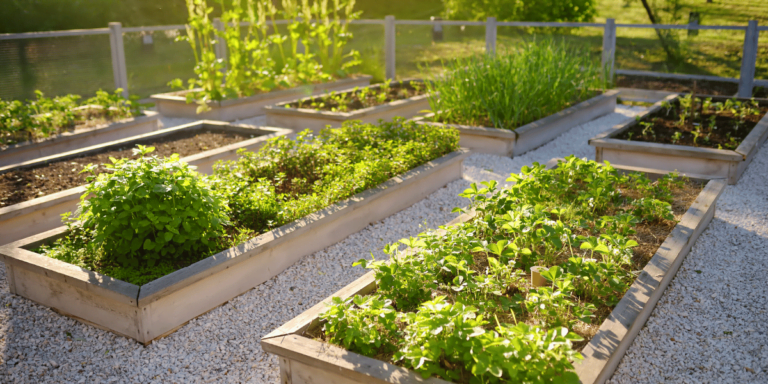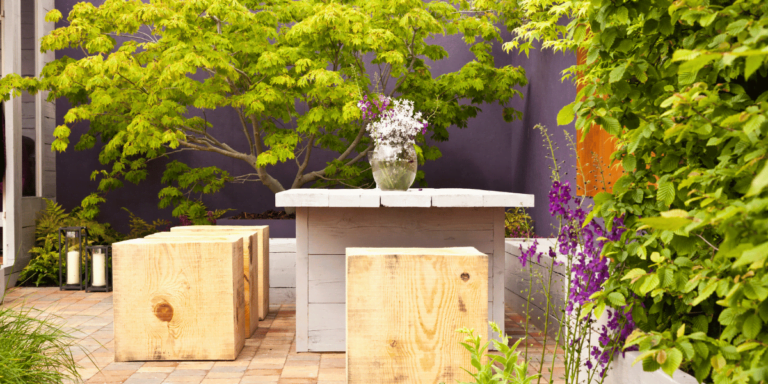Many people yearn for the taste of fresh, locally grown vegetables and fruits but may feel limited by their space. However, even those with little to no space or limited sunlight can still enjoy the benefits of growing their own food. Whether you live in an apartment with only a balcony or have a small yard or shared outdoor space, there are several techniques you can use to create a thriving urban vegetable garden. From container gardening to vertical gardening to raised beds, you can maximize your space and grow a variety of fruits and vegetables. With the right planning and techniques, you can enjoy a delicious and sustainable urban garden, while also incorporating eco-friendly practices and innovative water conservation techniques.
Key Takeaways:
- Urban vegetable gardens provide a sustainable way to grow your own food in limited spaces.
- Techniques like container gardening, vertical gardening, and raised beds can help maximize space and productivity.
- Incorporating eco-friendly practices and innovative water conservation techniques is essential for sustainable urban gardening.
- Proper planning and utilizing biophilic design principles can enhance the productivity and aesthetic appeal of your garden.
- An urban vegetable garden contributes to a greener and more sustainable future.
Container Gardening: Maximizing Small Spaces
Container gardening is an excellent option for those with limited outdoor space in an urban setting. Whether you have a small yard, shared courtyard, or just a balcony, you can grow a variety of vegetables and fruits in containers. This method allows for flexibility in terms of the types and varieties of plants you can grow. Container gardens are space-efficient, as every ounce of soil in the container can be utilized for fruit and vegetable production. They also have the added benefit of being accessible to individuals with reduced mobility. Additionally, container gardens can be moved throughout the day to chase the sun, ensuring that your plants receive adequate sunlight.
Another option for maximizing small spaces is through space-efficient vertical gardening, which allows you to grow plants vertically, taking advantage of wall space. By utilizing trellises, recycled pallet planters, or hanging hydroponic window gardens, you can make the most of your available space. Vertical gardening is particularly useful for vining plants such as tomatoes, winter squash, melons, and cucumbers, as well as leafy greens like Asian greens and salad greens.
For those looking to bring their vegetable garden indoors, indoor hydroponic systems are gaining popularity among urban gardeners. These systems provide an efficient and space-saving way to grow vegetables indoors without soil. Hydroponics utilize water-based nutrient solutions to deliver essential elements directly to plant roots, allowing them to grow faster and produce higher yields. With indoor hydroponic systems, you can enjoy fresh, homegrown produce year-round.
Benefits of Container Gardening:
- Maximizes small spaces
- Flexibility in plant selection
- Accessible to individuals with reduced mobility
- Mobility to chase sunlight
Benefits of Vertical Gardening:
- Utilizes wall space efficiently
- Maximizes productivity
- Ideal for vining plants and leafy greens
Benefits of Indoor Hydroponic Systems:
- Allows for year-round gardening
- Saves space by eliminating the need for soil
- Promotes faster growth and higher yields
With container gardening, space-efficient vertical gardening, and indoor hydroponic systems, you can transform even the smallest urban spaces into flourishing vegetable gardens.
Vertical Gardening: Utilizing Vertical Space
Vertical gardening is an innovative technique that allows urban gardeners to maximize limited space effectively. By utilizing vertical structures, such as trellises, recycled pallet planters, and hanging hydroponic window gardens, you can grow a variety of vegetables and fruits in urban environments. This method is especially beneficial for those with restricted outdoor space, such as small yards or balconies.
Many vegetables and fruits are well-suited for vertical gardening, including tomatoes, winter squash, melons, peas, pole beans, cucumbers, Asian greens, salad greens, strawberries, and kitchen herbs. These plants can be trained to grow upwards, utilizing wall space and creating a visually appealing garden.
Urban Permaculture Practices and Green Roof Ecosystems
To take vertical gardening to the next level, urban permaculture practices can be incorporated. Permaculture is a design system that aims to create sustainable and self-sufficient ecosystems. By implementing permaculture principles in urban gardening, you can maximize space usage, promote biodiversity, and contribute to the overall health of the ecosystem.
One example of an urban permaculture practice is the creation of green roof ecosystems. Green roofs are roof spaces that are covered with vegetation, creating a green and living space in urban areas. They not only provide additional vertical gardening opportunities but also offer numerous environmental benefits, such as reducing stormwater runoff, improving air quality, and mitigating the urban heat island effect.
By integrating green roofs and other permaculture practices into vertical gardening, you can create a sustainable and efficient system that allows for productive urban agriculture while improving the overall environmental health of the city.
Raised Beds and Square Foot Gardening: Maximizing Productivity with Less Effort
Raised beds and square foot gardening are two popular and effective techniques for maximizing productivity in small garden spaces. These methods offer numerous advantages for urban gardeners, including extended growing seasons, customizable soil conditions, excellent drainage, and reduced weed control. Moreover, they make gardening more accessible for individuals with limited mobility.
Creating a healthy soil mix with the ideal pH level is crucial for the success of raised beds. Organic composting methods can be used to improve soil fertility and overall plant health, ensuring optimal growth and productivity. By adopting organic composting techniques, urban gardeners can make use of kitchen scraps, yard waste, and other organic materials, reducing waste and enhancing their garden’s sustainability.
Square foot gardening, on the other hand, involves dividing the garden into small sections, allowing for efficient use of space and optimal plant growth. Utilizing this method, urban gardeners can cultivate a wide variety of vegetables, herbs, and flowers in a compact area. The concept of square foot gardening also incorporates contemporary garden artistry, creating a visually appealing and functional space for urban vegetable gardens.
With raised beds and square foot gardening, urban gardeners can maximize productivity with less effort. These techniques offer practical solutions for those with limited space, allowing them to grow their own food and experience the satisfaction of a bountiful harvest.
Planning Your Garden: Key to Success
Proper planning is essential for the success of an urban vegetable garden. By carefully considering the location, sunlight exposure, and available space, you can optimize your garden’s productivity. Begin by mapping out potential sites for pots and beds, taking into account the light and weather patterns in your area. Researching the plants that thrive in your local climate will help ensure a bountiful harvest.
In addition to practical considerations, incorporating biophilic design principles into your garden can enhance its aesthetic appeal and overall experience. Biophilic design is rooted in the concept of reconnecting people with nature, creating a space that promotes mental and physical well-being. By incorporating natural elements such as plants, water features, and natural materials, you can create a garden that fosters a sense of calm and tranquility.
When planning your garden, consider implementing the following biophilic design principles:
- Maximize natural light: Place your garden in an area that receives ample sunlight throughout the day. If your space is shaded, consider using reflective surfaces or installing artificial lighting to supplement natural light.
- Create a sense of enclosure: Use structures such as trellises, arbors, or fences to define the boundaries of your garden. This creates a sense of enclosure, making the space feel cozy and intimate.
- Incorporate water features: Consider adding a small pond, fountain, or even a simple birdbath to introduce the soothing sound and sight of water into your garden. Water features can attract birds and other wildlife, enhancing the overall biodiversity of your space.
- Choose native plants: Selecting plant varieties that are native to your region not only ensures their suitability to the local climate but also helps maintain the ecological balance of the area. Native plants provide food and habitat for local wildlife, contributing to a thriving ecosystem.
- Integrate natural materials: Incorporate natural materials such as wood, stone, and pebbles to add texture and visual interest to your garden. These materials have a grounding effect, creating a strong connection to the natural world.
By carefully planning your urban vegetable garden and incorporating biophilic design principles, you can create a space that not only yields a bountiful harvest but also provides a sanctuary for relaxation and contemplation.
Tips for Successful Vegetable Gardening in an Urban Setting
To ensure a successful vegetable garden in an urban setting, there are several important factors to consider. Let’s explore some tips and techniques that will help you optimize your garden’s productivity while embracing sustainable practices.
1. Proper Moisture Management
Monitoring the moisture levels and ensuring proper drainage is crucial for the health of your plants. Overwatering can lead to root rot, while underwatering can cause wilting and stunted growth. Use a moisture meter or check the soil regularly to maintain the ideal moisture balance for your vegetables.
2. Mulching for Moisture Retention
Using mulch in your garden helps retain moisture in the soil, control weeds, and regulate soil temperature. Organic mulches like straw, wood chips, or compost help keep the soil moist and improve overall plant health.
3. Planting at the Right Time
Planting the right vegetables at the right time is essential for a successful harvest. Consider the local climate and seasons when choosing what to plant. Some vegetables thrive in cooler temperatures, while others prefer warmer conditions. Researching planting guides or consulting with local gardeners can help you make informed decisions.
4. Pest and Disease Control
Monitoring for pests and diseases is crucial in preventing and addressing potential issues. Utilizing resistant varieties, practicing proper sanitation, and rotating crops can help control pests and diseases. Protecting plants with floating row covers also provides a physical barrier against pests.
5. Harvesting at the Right Time
Harvesting your vegetables at the right time ensures optimal flavor and quality. Each vegetable has different indicators of ripeness, such as color, texture, and size. Harvesting regularly and consuming what you grow will allow you to enjoy the freshest produce and maximize the benefits of your urban vegetable garden.
6. Embracing Sustainable Practices
Incorporating sustainable practices in your urban vegetable garden not only benefits the environment but also enhances its efficiency. Consider implementing green roof ecosystems, which utilize rooftop space for growing vegetables and promoting biodiversity. Smart garden automation, such as using sensors and timers for irrigation, can optimize water usage and decrease waste.
By following these tips and embracing sustainable practices, you can create a successful and productive vegetable garden in your urban setting. Enjoy the journey of growing your own fresh and nutritious produce while contributing to a greener and more sustainable future.
Conclusion
Urban vegetable gardens offer a sustainable and rewarding way for individuals to grow their own food in limited spaces. Whether you have a small balcony or a shared courtyard, with some creativity and careful planning, you can create a thriving urban vegetable garden that provides fresh and nutritious produce while contributing to a greener and more sustainable future.
By utilizing practices such as container gardening, vertical gardening, raised beds, and proper planning, urban gardeners can maximize productivity even in small spaces. Techniques like hydroponics and green roofs allow for innovative and efficient methods of growing vegetables in urban environments.
Furthermore, incorporating eco-friendly practices is essential to the success of urban vegetable gardens. Organic composting, smart garden automation, and biophilic design principles contribute to the health of both individuals and the environment. These practices not only improve soil fertility and plant health but also promote a closer connection with nature, enhancing the overall experience of the garden.
With urban vegetable gardens, anyone can enjoy the benefits of fresh and locally grown produce, no matter how limited their space may be. Embrace the possibilities and embark on an eco-friendly garden renovation, making a positive impact on your health and the world around you.
Frequently Asked Questions
What is urban vegetable gardening?
Urban vegetable gardening refers to the practice of growing vegetables and fruits in small spaces or urban environments, such as balconies, terraces, small yards, or shared outdoor spaces.
What are some techniques for maximizing small spaces in urban vegetable gardens?
Some techniques for maximizing small spaces in urban vegetable gardens include container gardening, space-efficient vertical gardening, and indoor hydroponic systems.
How can vertical gardening be utilized in urban environments?
Vertical gardening allows plants to grow upwards, utilizing wall space and maximizing productivity. It can be achieved through trellises, recycled pallet planters, and hanging hydroponic window gardens. This technique is beneficial for growing vegetables such as tomatoes, cucumbers, winter squash, and a variety of kitchen herbs.
What are the advantages of raised beds and square foot gardening?
Raised beds provide advantages such as an extended growing season, customizable soil conditions, better drainage, reduced weed control, and improved accessibility for individuals with limited mobility. Square foot gardening divides the garden into small sections, optimizing space and plant growth while incorporating contemporary garden artistry.
What should I consider when planning my urban vegetable garden?
When planning your urban vegetable garden, consider the location, sunlight exposure, available space, and local climate. Mapping out potential planting sites, monitoring light and weather patterns, and researching suitable plant varieties for your climate will help optimize productivity.
What are some tips for successful vegetable gardening in an urban setting?
To ensure success in vegetable gardening, monitor moisture levels, ensure proper drainage, use mulch for moisture retention and weed control, plant suitable vegetables for your climate and season, prevent and address pests and diseases, harvest at the right time, and embrace sustainable practices such as green roof ecosystems and smart garden automation.
How do urban vegetable gardens contribute to eco-friendly garden renovation?
Urban vegetable gardens contribute to eco-friendly garden renovation by incorporating sustainable practices such as organic composting, smart garden automation, and biophilic design principles. These practices promote environmental health, resource conservation, and a greener and more sustainable future.

















